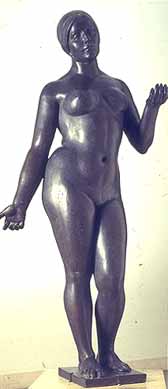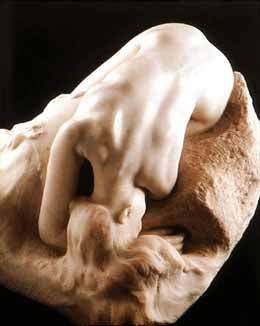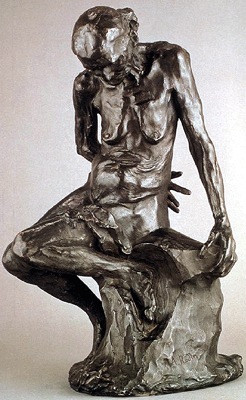
Page 13 of 17
Read the text and study the images below then move on to page 14.
9. Expressive/empathetic qualities
All the aspects that we have been looking
at can create expressive qualities which evoke an empathetic response
in the viewer. These responses will vary from one viewer to another, but
it may be possible to generalise about some responses. Sculptures with
flowing, rounded forms, which rest securely, might seem to suggest calm
and repose, while those with sharp, angular contours, or highly manipulated
surfaces might seem more vital and restless.




above Auguste Rodin, Danaide, marble, 1885. Musee Rodin, Paris.
above Auguste Rodin, She was the helmetmaker's beautiful wife, bronze, 1888. Musee Rodin, Paris.
Both these works are by August Rodin but the Danaide is smooth and beautiful whereas She was the helmetmaker's beautiful wife is jagged and expressive.